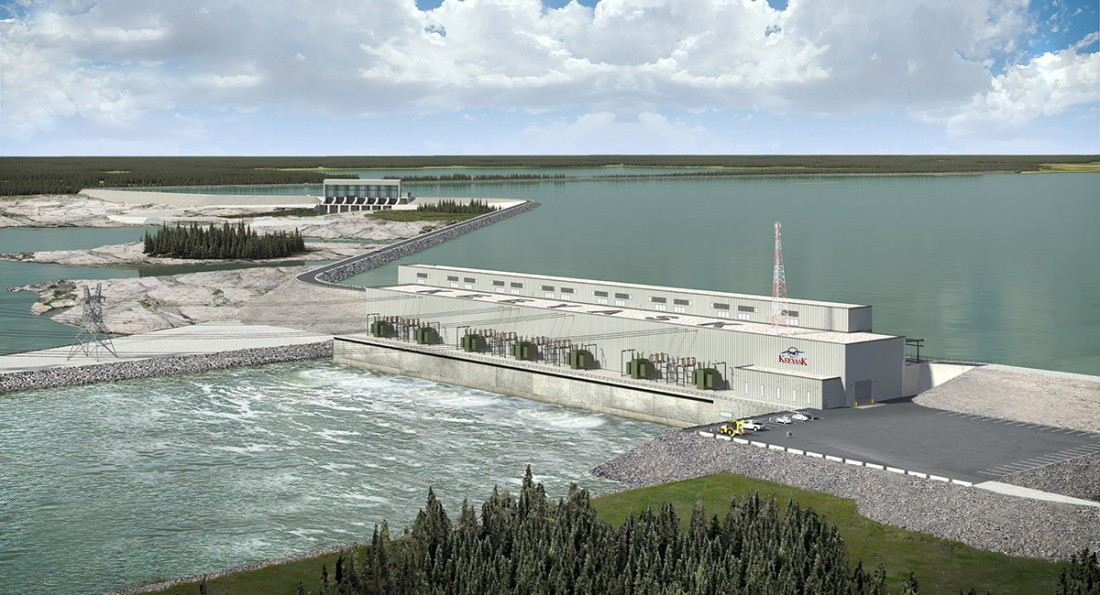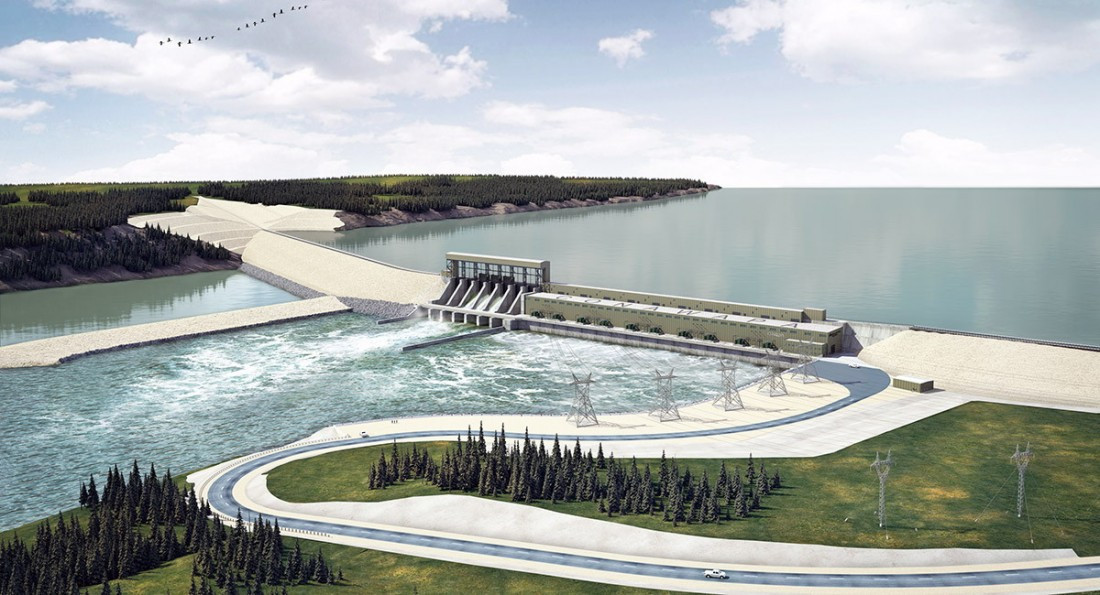Public invited to CEC’s hydro project hearings
Repeating failures of past projects would be a ‘dam’ shame
There’s a rosy picture painted on the PowerSmart building at Portage and St. James, but it may not tell the whole story of the impact of hydroelectric power development – despite it being a renewable energy industry.
In an effort to consider that impact, the Clean Environment Commission (CEC) of Manitoba is holding public hearings over the next six weeks centered around the Keeyask Generation Project, a proposed hydro dam which would span the Lower Nelson River about 725 kilometers northeast of Winnipeg. The proceedings, held at the Fort Garry Hotel on 222 Broadway during weekdays from October 21 to December 6, will see two of those days – November 4 and 14 – include evening sessions to provide further access for the public to have a say.
Cathy Johnson, Secretary to the CEC, describes the hearings as inclusive, allowing anybody who wants time to present and give their input to be accommodated - at least for 15 minutes.
“We set aside the two evening sessions because often people are working during the day and want to have their say, but they just can’t make it during the day, so we’ve done that on purpose so that the public can get in there,” she says. “But if there are people who want to make a presentation but can’t make it those two days, give us a call and we’ll see what we can do.”
The proponent of the project is a group called Keeyask Hydropower Limited Partnership (KHLP), comprised of Manitoba Hydro and the leadership of four First Nations communities located in the area of the proposed site: Fox Lake, York Factory, Tataskweyak and War Lake.
While KHLP presents different aspects of the proposed project, such as its Environmental Impact Statement, both the CEC commissioners and the groups registered as participants will be able to respond.
“The daytime sessions are pretty heavy,” Johnson indicates. “It’s where the proponent will be making their presentation, describe their project and what they’ve done. And then the participants – or the parties withstanding – will be cross-examining them and also making their own presentations.”
There are seven groups registered as participants in the proceedings: Manitoba Wildlands (a non-profit environmental and research organization), the Manitoba Metis Federation, Peguis First Nation, the Consumers Association of Canada (Manitoba) Inc., Kaweechiwasihk Kay-tay-a-ti-suk Inc. (an Elders’ group representing the interests of the people of York Factory First Nation), Concerned Fox Lake Grassroots Citizens (representing the interests of the Fox Lake community) and Pimicikamak Okimawin (the traditional government of the Pimicikamak Cree Nation located in Cross Lake).
Even though the information being presented can be quite legalistic or technical in nature, and is mostly delivered by lawyers or other professionals, the hearings don’t have the same level of strict formalities found in a courtroom.
“It’s been described as the minor-league court,” Johnson explains. “We do have some formal procedures, but we try to be as informal as possible – we don’t use the gavel, and that kind of thing – but there are formal rules that have to be adhered to.”
Some of those more formal procedures were motions hearings that took place last Friday prior to the public proceedings. There were filings from a few of the groups, some requesting that the hearings be delayed on the premise that a more comprehensive study of the cumulative effects of all the hydro projects along the waterway be completed before moving forward.
Another filing was requesting that a study of the social impacts of previous hydro projects be included as part of the record, in case there’s pertinent information that might help mitigate such impacts in the future if the dam is indeed built.
At press time, no word was given on whether a decision had been made to include the social impacts report.
The hearings are, however, moving forward without consideration for a study of the cumulative effects of multiple projects, though that argument may be brought forward at some time. As for the commission itself, it does not make any actual decision on the project, it simply provides a report to the Minister of Conservation and Water Stewardship.
“We have 90 days after the end of the hearing to submit our report to the minister,” Johnson clarifies. “It’s the minister who makes the decisions – we just make recommendations.”
On the recommendations of the CEC, the minister recently granted Manitoba Hydro a license, with conditions, for their Bipole III transmission line.
Published in Volume 68, Number 8 of The Uniter (October 23, 2013)








